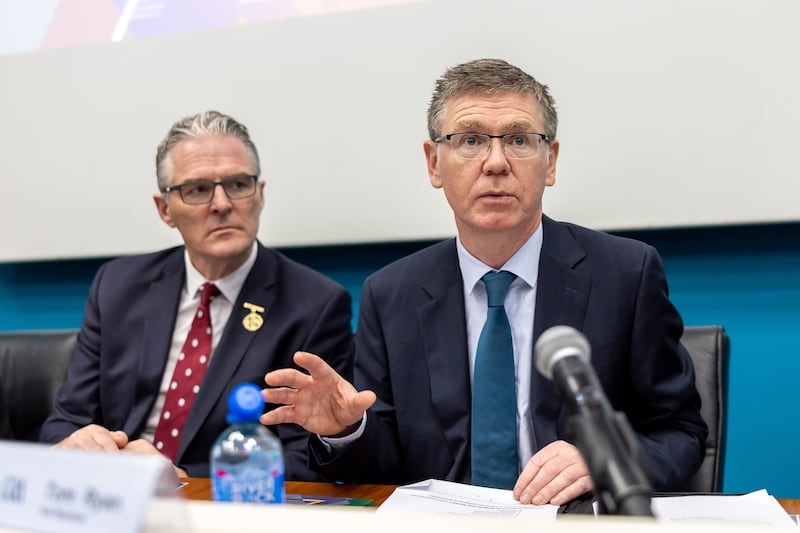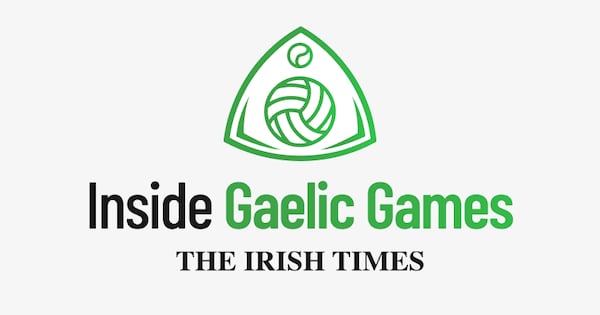There was a slight sense of deja vu at one stage during Tom Ryan’s presentation of his annual report last week. In a couple of pages of blue-sky thinking, the GAA director general speculated on the association’s 150th anniversary, which is just nine years away.
There was a list of items that, when questioned, he declined to categorise as either ambitions or even aspirations. In his report he even distances himself from the vision.
“What follows is not a list of ambitions, not targets, not even hopes. They have no status other than some (possibly) idle musings on what a future GAA might look like.”
The reason for deja vu is that at Ryan’s first press conference in April 2018, he was asked about the report of a committee – appointed three years previously by then president Aogán Ó Fearghail and chaired by former Into general secretary John Carr – which had just been issued.
READ MORE
Subtitled Towards the 150th Anniversary of the GAA, (T150) it advanced concrete proposals, some controversial – such as paying players and managers and abolishing provincial councils – as well as some other ideas that featured in last week’s annual report.
It was also prescient, advocating, among other things, the split season, integration with the women’s sports and a tiered championship, which is envisaged as a replacement for provincial championships, and the GAA running its own commercial media platform for the showing of matches while retaining “the right to charge for a portion of its elite games as an income stream”.
The most relevant aspect though of the 2018 document, which was seen by The Irish Times, is that it never saw official light of day despite the T150 committee’s ambition in its report’s foreword: “Ultimately this report is intended to generate the kind of widespread debate that is now required.”
Then incoming president John Horan appeared no more minded to release the report than his predecessor, who had commissioned it. More peculiarly, successor Larry McCarthy, who actually sat on the T150 committee, was asked about it on taking office and took circumspection to an art form.
“I would have to go back and read it. It would be inappropriate of me to make a comment, not having read it. When did we complete it, was it two years ago, three years ago? I haven’t read it in a while so it would be unfair for me to comment on it directly.”
Seven years ago, when the report was still current, Ryan, as new director general, was asked about it and replied: “The report itself – there are quite a number of things in the course of any year that we’ll commission or ask people to work on or prepare a paper on and so on; it’s not really a policy statement when you do or don’t publish any of those papers.
“They will still generate an amount of internal debate and discussion but we don’t publish every paper or single piece of work that’s commissioned because even on a practical level, you would have conflicting arguments or you would be a hostage to fortune on particular elements so it’s not a comment on that particular report, which has a lot of thought-provoking content.”
It obviously had, as some of the content made its way into last week’s vision of, or speculation about, the future.
An integrated association for Gaelic games is advanced in T150: “There will be one governing body for the Gaelic games family.”
Even seven years ago it hardly took Nostradamus to foresee the need to combine the women’s organisations with Croke Park, but there is an urgency about the matter in the 2018 report that hadn’t emerged at that stage within the GAA.

Last week Ryan was careful to urge caution about the prospect of meeting the 2027 deadline for integration without actually resiling from it and his 2034 vision uses the present tense: “All Gaelic game codes are governed by a single organisation”.
His reference to club managers being restricted to their own clubs is another echo of T150: “At club level, those coaching/managing teams must already be, or become, a member of that club.”
There are other echoes of T150 but equally, new ideas from the director general, such as separate football and hurling seasons, a uniform club championship structure, general membership that is not attached to a club, and each club producing 10 adult referees a year (a colleague said his club was happy if they produced 10 players a year).
In his own vision of 2034, Ryan rounds off by urging some unfettered thinking.
“10 years is not very long in the GAA timeline, so I suspect things won’t in fact be very different at all. So, forget for a second that 10-year limitation; and forget how achievable these things might be – in 10 years or indeed ever.
“Maybe some of this will never see the light of day, so forget them altogether if you like. Better still, conjure up a picture of your own.
“The important thing here is not really these specific ideas but casting aside the limitations of where we are starting from and trying not to dwell all the time on the reasons why something won’t work. I’m sure Michael Cusack never envisioned what and where we are today, so anything is possible…”
Even the belated publication, perhaps on the GAA website, and general discussion of the T150 report?
email: sean.moran@irishtimes.com
















